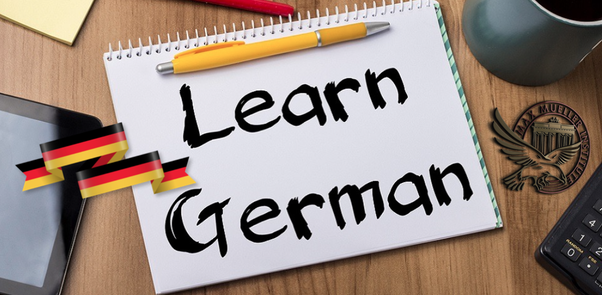What is the most effective method for learning German?
In this article, I’ll show you the Best way to learn German in practice, and you’ll have the opportunity to try it out at the bottom of the page.
I’ll go over the differences between studying German at home and learning it in school, the alternatives you have when learning at home, why some of those techniques are better than others, and finally, which way wins and why. This post is for you if you want to learn German on your own and, in particular, if you want to learn conversational German. I’ll also teach you an intimate secret about studying German that most course producers won’t tell you.
This will allow you to distinguish between someone claiming that one of his pupils acquired a language in two months and me claiming that 16000 of my students studied German and became fluent in six to eight months.I say this because that one person must be outstanding, and there’s a good possibility you won’t be able to learn that quickly. But if 16000 people can achieve it, chances are you can too.
Is there a single optimal method for learning German?
A hilarious word is the finest approach to learning German.
No, it’s intentionally ambiguous. It’s the equivalent of proclaiming a specific phone to be the finest smartphone on the market. If the phone is inexpensive, another phone will be even cheaper, but it may not be as attractive. If that phone has a fantastic camera, there will be a phone with a less impressive camera but a faster processor I mean, you’re familiar with cell phones, right?
To be deemed the Best way to learn German, something must have enough evidence to support it under specified conditions, and the goal here is not to try to meet everyone’s wants – that is impossible. The objective is to be so good to its target customers that anything else aimed at them will pale in comparison this works because similar customers want the same things from a product or service. With this in mind, someone looking for the best way to learn German is not the same as someone looking for a way to learn German without courses, because they will be evaluating various factors. With that in mind, let me now tell you which technique of learning German is the best and what criteria I used to arrive at that conclusion.

TPRS is not just the greatest but also the simplest method of learning German .
I’m sure you’ve heard me mention the TPRS before, but have you ever considered it in the context of the smartphone I used as an example earlier? TPRS is, after all, a method created expressly for people who want to learn German quickly. And someone who wants to learn quickly won’t have time to learn about definite and indefinite articles in German, let alone more difficult grammatical issues like how to conjugate the verbs sein and haven. They want to comprehend and speak German right away, which is exactly what the TPRS approach accomplishes. That leaves a lot of people out:
• Students who wish to learn German in school
• Moviegoers who want to learn German
• Those who want to study German via apps on their phones
What exactly does this imply?
Why is TPRS superior to learning German in school and via movies and apps?
Remember how I said I’d tell you something course creators don’t know?
It’s now or never. Certain techniques, according to course developers, are better because they expose you to real-life German spoken by native German speakers. They will tell you that particular ways are superior because they know people who have used them and acquired German in three to four months. They won’t tell you, though, that the greatest way to learn German quickly is to be able to think in German. If you have to spend days learning the German case-accusative or the modal verb ‘kennel,’ you won’t learn quickly. If you have to study these as separate topics, you’ll have to remember them every time you talk, or you won’t be able to communicate properly.
Consider this • Despite the fact that most methods will teach you, German, you will still need to build certain sentences in your head before speaking them.
• You may understand some words when listening to German podcasts or watching German movies, but you won’t be able to respond.
• It’s not always possible to contact the course creators of most programs and ask them questions about places where you might be stuck, and they don’t always provide remedial comments. This means that you can still learn German using these methods, but it will take you longer to master it. But, you say, these approaches have testimonials?
They also describe how someone adopted a specific strategy to learn German and was able to achieve fantastic results in a short period of time. Now, I’m not completely opposed to testimonials. They are, after all, the only way to demonstrate that a method works, and I use them myself, so how could I be against them? The issue at hand is one of numbers.
The mathematical, practical, and time-tested evidence that TPRS is the most best way of learning German.
How far can you count in German now that we’re talking about math? If you need a quick remedy, here’s a guide. Now, let’s get back to the TPRS math…Students who employed the TPRS method improved their fluency six times faster than those who used other strategies. I’ve been teaching German for over 12 years, and throughout that time I’ve had the privilege of teaching German to over 20000 people, which is an enormous figure. How many other methods can offer numbers like these? Outside of Germany, it’s not simply international students. Before I found the TPRS method, I used to teach young kids who struggled with German grammar.
This was mostly due to the fact that they had to master independent themes such as the distinction between green and germ or the difference between Dann and den. However, after I began using the TPRS method, they were able to confidently speak conversational German in just two weeks!
Do you want to give the TPRS a shot as well? To learn more, go to this page. So, if you’re looking for a quick way to learn German, the TPRS approach has the numbers to back it up.
It’s also the most effective approach to study German online if you want to do it quickly.

What happens if the TPRS approach fails?
One issue with the TPRS approach is that it is so simple that you may overlook it.
The text are brief, and the illustrations are amusing. In fact, in this TPRS vocabulary lesson, you can see just that. The fact that there are no tests or emails to remind you to practise will also make the TPRS easier to disregard. This simplified strategy may end up derailing you and preventing you from becoming fluent in 6–8 months. And if you don’t practice every day, you’ll soon be seeking another strategy because the TPRS doesn’t appear to be working. I can assist you in areas of study where you are having difficulty. I can show you how to learn German at home and succeed just like you would if you went to school.
However, I am unable to teach you how to be disciplined. The nutrition industry is a multibillion-dollar industry for a reason other than the 5% of people who stick to its plans.
It’s because of the 95% that don’t, opting instead to acquire alternative programs that they won’t stick to. Discipline is essential in any sort of human development. You just need a little patience and an activity that you can do every day to practice, and you’ll see why over 80% of my students love the TPRS after 6–8 months. Some of them saw the value in studying German and migrated to Germany as a result of their efforts some learned German and went to work for a German company to take advantage of the higher salaries in Germany than in most other nations.
Because of the TPRS technique, individuals have received scholarships to German institutions or taken advantage of free German university programs.

